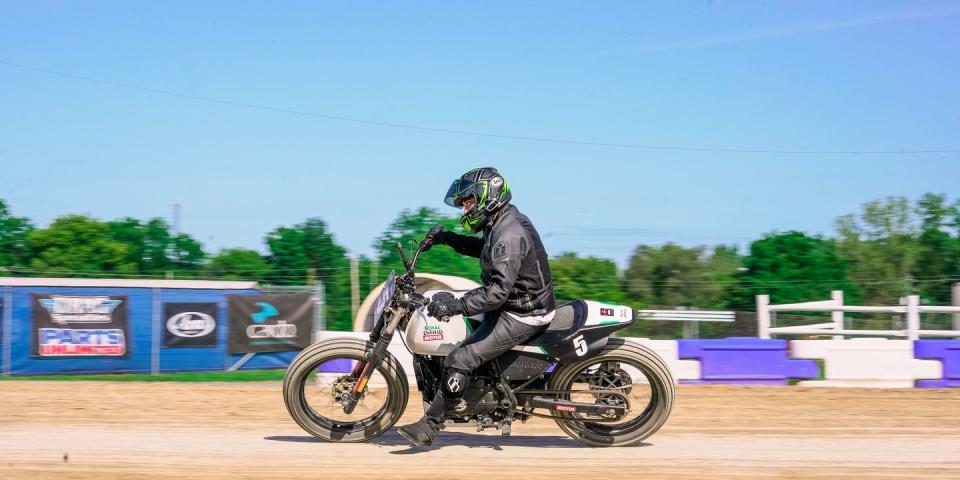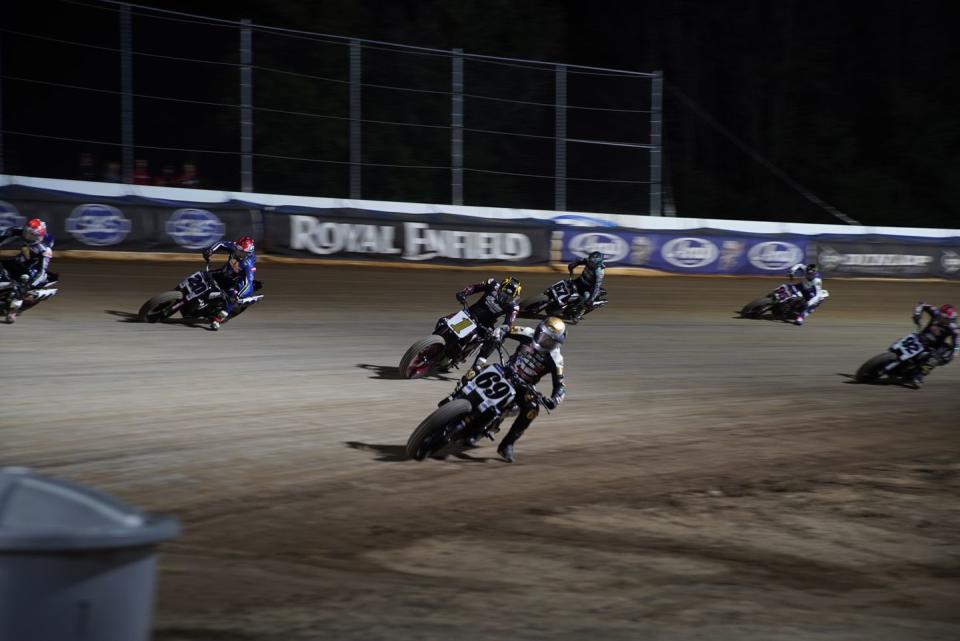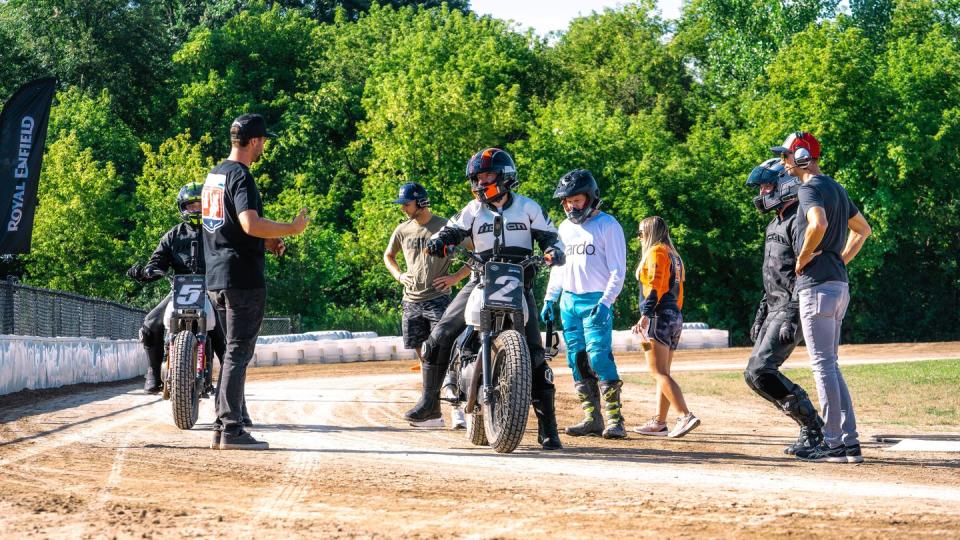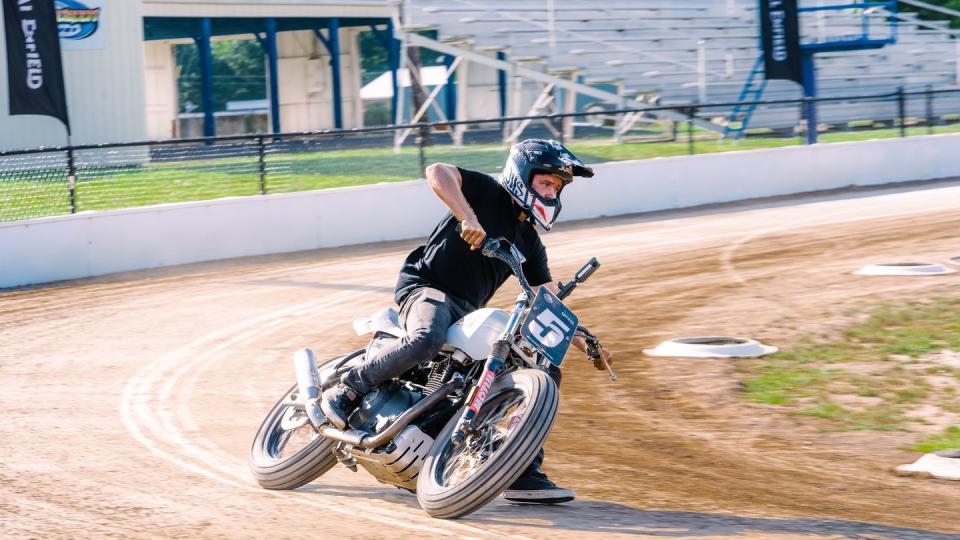If You Think You Know How to Ride Motorcycles, Try Flat Track

I accepted that this would not go well long before I arrived at the track. My only goal was to not break anything. On my body, that is. I triaged the motorcycles as likely casualties. Somehow, the 411-cc Royal Enfield Himalayan and I finished the day with all of our appendages intact.

As an outsider, flat track racing is terrifying. Riders launch their bikes around dirt courses at alarming speeds, throwing their body weight around, sliding rear wheels out as they drag their left foot to stabilize the slide around corners. It’s a manic art. I got to try it firsthand at Royal Enfield’s Slide School, thanks to an invite from the American Flat Track series.
The end result of my half-day school didn’t much resemble the racing seen by the impressive, professional flat-trackers teaching me. But, it did leave me with ample appreciation for the intense dance the riders do when sliding their motorcycles out of corners.
And it very much is a dance.

“I’m sitting what I call ‘crack on crack,’” school instructor and flat track racer Johnny Lewis told me. “Your butt crack is on the right side of the seat. You’ll really feel yourself sitting on the edge of the seat. It allows you to lean the motorcycle over a little bit more, and when you lean over, your body is going to stay upright. You’re not going to lean in like a road racer, because when you lean in, you’re taking weight off the tires, traction away, and the bike’s going to want to slide out.”
That was just one small part of how Lewis explained body positioning on a flat track motorcycle. Then, there’s what visually makes flat track instantly recognizable. You know. The whole foot-dragging thing.

“We put a foot out as a rudder. It’s what helps us turn,” Lewis said. “If the track is really hooked up and you don’t have to turn the bike much, guys aren’t sticking their leg way far out. If it’s a little bit slick and you really need to turn the motorcycle, you’ll see guys really getting their leg out… The leg is what turns the motorcycle when we really need to get that bike turned.”

 Yahoo Autos
Yahoo Autos 